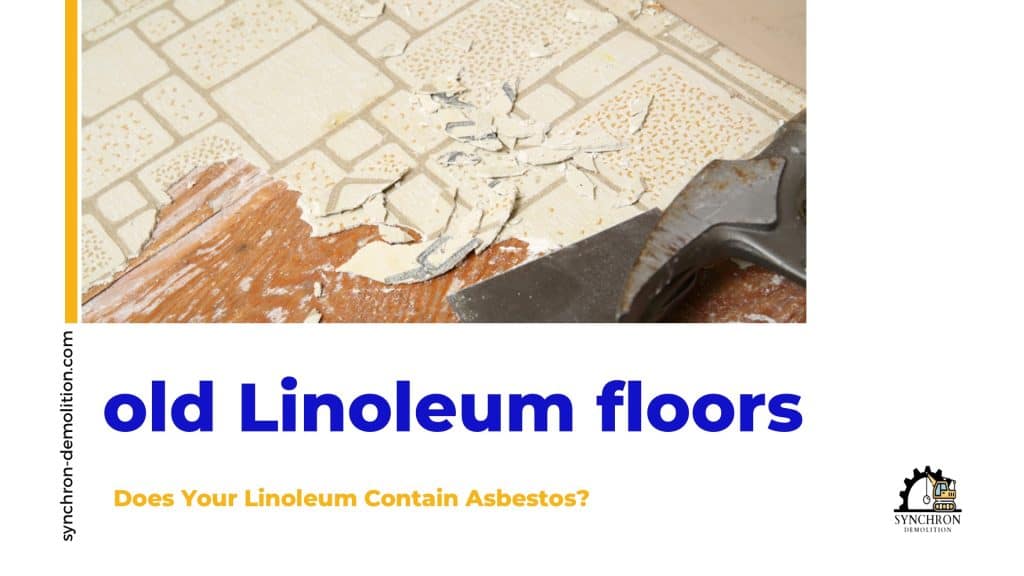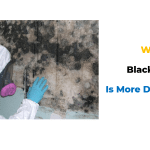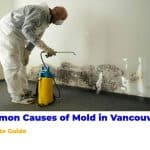Linoleum floors are common in older homes. They’re durable, affordable, and were popular for decades. But if your flooring was installed before the 1980s, you might wonder if it contains asbestos. This guide will help you figure out if your linoleum has asbestos, what signs to look for, and what steps to take if you’re concerned.
What is Linoleum?
Linoleum is made from natural materials like linseed oil, cork dust, wood flour, and jute. It became popular in the early 1900s and was widely used in kitchens and bathrooms. It’s often mistaken for vinyl, but the two are different. Linoleum is eco-friendly and doesn’t usually contain synthetic materials.
When and Why Asbestos Was Used in Flooring
Asbestos was once used in many building materials, especially from the 1920s to the 1980s. It was cheap, strong, and fire-resistant. Flooring manufacturers added it to products for extra durability and insulation. While real linoleum didn’t typically contain asbestos, some flooring products labeled as linoleum were actually vinyl-based and did contain it. The backing or adhesive used to install flooring may also include asbestos.
Does Linoleum Contain Asbestos?
Most true linoleum does not have asbestos. However, confusion often comes from vinyl sheet flooring, which looks similar. If your flooring was made between the 1920s and 1980s, especially in the ’50s to ’70s, it’s possible asbestos is present. Even if the linoleum itself is asbestos-free, the adhesive or backing could contain asbestos fibers.
Check for these clues:
- Installed before 1980
- Looks like vinyl or sheet flooring
- Brittle or discolored backing
- Unknown manufacturer or no product labeling
How to Identify Asbestos in Flooring
You can’t tell by just looking. The only way to know for sure is to test it.
Here’s what you should do:
- Do not disturb the flooring. Asbestos is dangerous when airborne.
- Hire a certified asbestos inspector. They will safely take samples.
- Send samples to a certified lab. Testing is affordable and reliable.
Avoid scraping, sanding, or pulling up old flooring on your own. Even a small amount of disturbed asbestos can pose health risks.
What to Do if You Suspect Asbestos
If you think your flooring has asbestos:
- Leave it alone until you confirm it.
- Call a professional to conduct asbestos testing and inspect the flooring.
- Consider encapsulation (sealing it) or professional removal.
Don’t attempt DIY removal. Many states have laws against it, and improper handling can spread asbestos throughout your home.
Asbestos-Free Flooring Alternatives
If you’re remodeling, choose safe, modern materials.
Here are a few options:
- New linoleum (made with natural materials)
- Luxury vinyl tile (LVT) labeled asbestos-free
- Cork, bamboo, or engineered hardwood
Look for certifications like FloorScore or GreenGuard to ensure the products are low-emission and safe.
Conclusion
If your home has old flooring, it’s smart to ask questions. Linoleum itself usually doesn’t contain asbestos, but similar-looking materials might. If in doubt, get it tested. Your safety and your family’s health come first. Don’t guess—know for sure before you renovate or remove anything.
Need help with asbestos testing or removal? Synchron Demolition specializes in asbestos services in Vancouver, North Vancouver, West Vancouver, and Burnaby. Contact us today for a safe and professional inspection.




